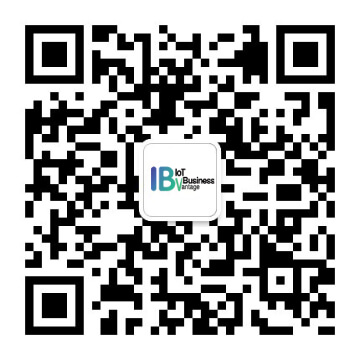子设备添加
更新时间:2025-04-03 09:29:18下载pdf
子设备添加 是子设备接入网关的第一步,本文将详细介绍 子设备添加 流程。
功能描述
子设备添加 是子设备通过网关绑定到云端的过程,也称设备激活。从网关使用者的角度来看,标准的操作流程如下:
-
打开涂鸦 智能生活 App。如无该 App,请在各移动应用中心下载。
-
选择网关进入网关面板主页,单击 添加子设备,让网关处于允许添加子设备状态。
-
长按子设备复位按键,让子设备进入配网状态,进入配网状态的子设备定时广播。
-
子设备加入到网关所在的网络后,网关把子设备绑定到云端,App 上会显示已入绑定的子设备列表,再单击 App 上的 完成 结束入网。再单击 完成 结束入网。
设备入网的交互流程示意图:
根据以上示意图,SDK 与应用涉及三部分交互:
- SDK 通知应用允许或禁止子设备入网。
- 应用调用 SDK 的设备绑定接口,把子设备绑定到云端。
- SDK 通知应用子设备的绑定结果。
使用方法
- 调用
tuya_subdev_user_sigle_type_reg接口注册设备管理回调,并实现dev_add和dev_bind的回调接口。 - 实现网关与子设备的通信逻辑开发。
- 子设备入网后,调用
tuya_iot_gw_bind_dev接口把子设备绑定到云端。
数据结构
/**
* @brief The sub-device management callback
*/
typedef struct __ty_gw_subdev_mgr_cbs_s {
GW_PERMIT_ADD_DEV_CB dev_add; /**< add device callback function, see GW_PERMIT_ADD_DEV_CB */
GW_DEV_DEL_CB dev_del; /**< delete device callback function, see GW_DEV_DEL_CB */
DEV_RESET_IFM_CB dev_reset; /**< device reset callback function, see DEV_RESET_IFM_CB */
GW_BIND_DEV_INFORM_CB dev_bind; /**< device bind result callback function, see GW_BIND_DEV_INFORM_CB */
DEV_OBJ_DP_CMD_CB dp_cmd_obj; /**< obj dp command, see DEV_OBJ_DP_CMD_CB */
DEV_RAW_DP_CMD_CB dp_cmd_raw; /**< raw dp command, see DEV_RAW_DP_CMD_CB */
DEV_DP_QUERY_CB dp_query; /**<query dp, see DEV_DP_QUERY_CB */
DEV_HEARTBEAT_SEND_CB dev_hb; /**< device heartbeat query callback function, see DEV_HEARTBEAT_SEND_CB */
DEV_UG_INFORM_CB dev_upgrade; /**< device upgrade callback function, see DEV_UG_INFORM_CB */
GW_DEV_WAKEUP_CB dev_wakeup; /**< waking up low-power device callback function, see GW_DEV_WAKEUP_CB */
GW_DEV_GRP_INFM_CB dev_grp_info; /**< group action callback function, see GW_DEV_GRP_INFM_CB */
GW_DEV_SCENE_INFM_CB dev_sce_info; /**< scene action callback function, see GW_DEV_SCENE_INFM_CB */
GW_DEV_SIGMESH_TOPO_UPDAET_CB bt_topo_update; /**< adding Bluetooth mesh device to gateway callback function, see GW_DEV_SIGMESH_TOPO_UPDAET_CB */
GW_DEV_SIGMESH_DEV_CACHE_DEL_CB bt_cache_del; /**< removing Bluetooth mesh device from gateway callback function, see GW_DEV_SIGMESH_DEV_CACHE_DEL_CB */
GW_DEV_SIGMESH_CONN_CB bt_conn; /**< Bluetooth mesh device connection function, see GW_DEV_SIGMESH_CONN_CB */
DEV_ONLINE_STAT_SEND_CB dev_online; /**< device online status changed callback function, see DEV_ONLINE_STAT_SEND_CB */
}TY_GW_SUBDEV_MGR_CBS_S;
API 说明
子设备绑定
/**
* @brief [Compatible interface] bind a sub-device to gateway
*
* @param tp sub-device type
* @param uddd user-defined type
* @param id sub-device id
* @param pk sub-device product key
* @param ver sub-device version
*
* @return OPERATE_RET OPRT_OK is success
*/
#define tuya_iot_gw_bind_dev(tp, uddd, id, pk, ver) \
tuya_iot_gw_bind_dev_attr(tp, uddd, 0, id, pk, ver, NULL, 0, FALSE, NULL)
调用 tuya_iot_gw_bind_dev 可以向云端对该子设备进行绑定,绑定成功后将返回 OPRT_OK。
使用示例
/**
* @brief The callback to invoke when to add devices.
* @param[in] tp : The type of protocol
* @param[in] permit : Whether to join or not
* @param[in] timeout : Timeout
*/
STATIC BOOL_T __dev_add_cb(CONST GW_PERMIT_DEV_TP_T tp, CONST BOOL_T permit, CONST UINT_T timeout)
{
/**
* TODO:
* permit == TRUE
* allow sub-device to join network and timeout is activated
*
* permit == FALSE
* stop net-in.
*/
/**
* Here we have an example showing how a sub-device join
* a) Using fix-information sub-device
* b) if it is not bound, bind it.
*/
DEV_DESC_IF_S *dev_if = NULL;
CHAR_T *dev_id = "abcdefabcdef"; // The device ID which must be unique under the gateway. Typically, the MAC address of the sub-device can be used as the dev_id.
CHAR_T *pid = "d1xabwgg"; // The PID of a three-way switch created in Tuya Developer Platform.
if (permit) {
dev_if = tuya_iot_get_dev_if(dev_id);
if (dev_if && dev_if->bind) {
return TRUE;
}
tuya_iot_gw_bind_dev(DEV_ATTACH_MOD_1, 0, dev_id, pid, "1.0.0");
}
return TRUE;
}
/**
* @brief The callback to invoke when to bind devices.
* @param[in] dev_id : The device ID.
* @param[in] result : The bind result.
*/
STATIC VOID __dev_bind_cb(CONST CHAR_T *dev_id, CONST OPERATE_RET result)
{
/**
* TODO:
* result != OPRT_OK
* a) bind failed , do something?
* b) remove sub-device
*
* result == OPRT_OK
* a) maybe you should set heartbeat
* b) read sub-device's state & report
*/
/**
* Here we have an example showing what we should do after binding is successful
* a) set sub-device heartbeat : 2 mins timeout & 3 times
* b) report DP information
*/
if (result == OPRT_OK) {
tuya_iot_set_dev_hb_cfg(dev_id, 120, 3, FALSE);
TY_OBJ_DP_S *dps = (TY_OBJ_DP_S *)Malloc(3 * SIZEOF(TY_OBJ_DP_S));
if (dps == NULL) {
return;
}
// all switch on
for (int i = 0; i < 3; i++) {
dps[i].dpid = (i + 1);
dps[i].type = PROP_BOOL;
dps[i].value.dp_bool = TRUE;
}
dev_report_dp_json_async(dev_id, dps, 3);
}
}
TY_GW_SUBDEV_MGR_CBS_S dev_mgr_cbs = {
.dev_add = __dev_add_cb,
.dev_bind = __dev_bind_cb,
};
tuya_subdev_user_sigle_type_reg( &dev_mgr_cbs , DEV_ATTACH_MOD_1 );
该内容对您有帮助吗?
是意见反馈该内容对您有帮助吗?
是意见反馈






